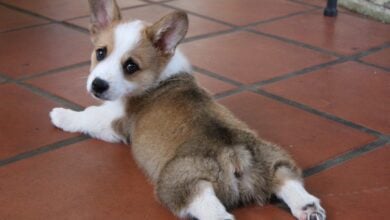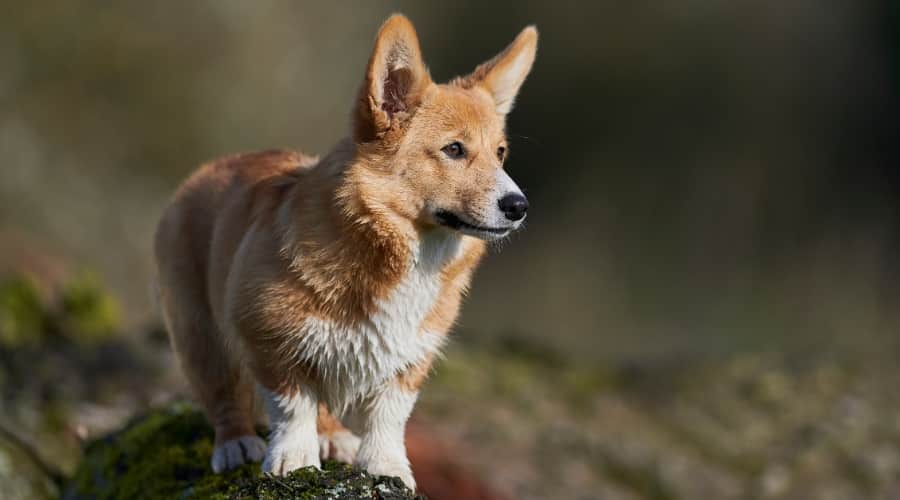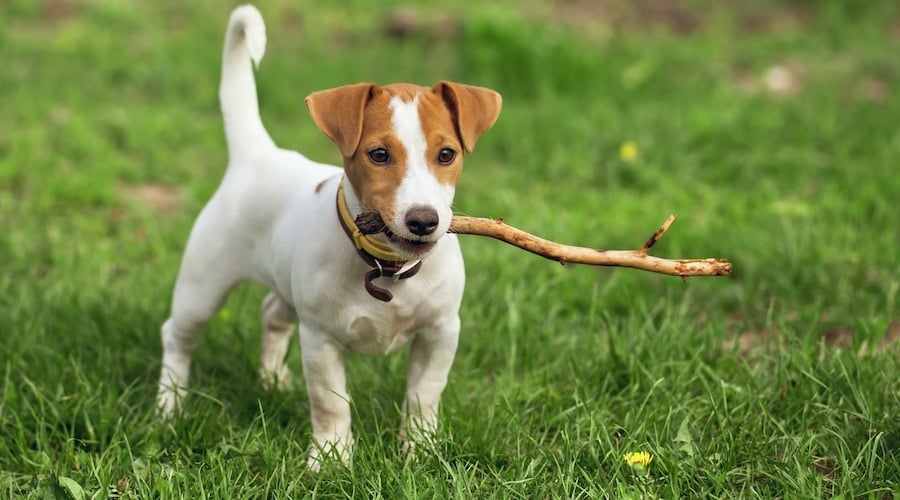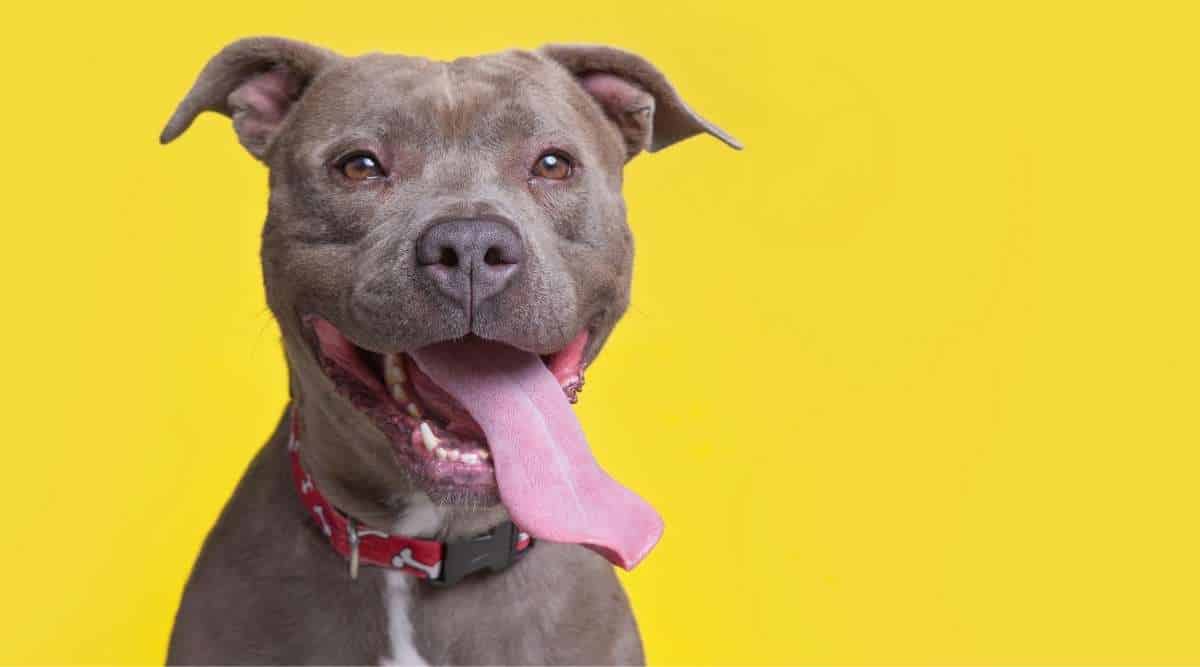The Most Fascinating Extinct Dog Breeds (& What They Did When They Were Alive)
When you purchase through links on our site, we may earn a commission. Here’s how it works.
Your dog might have royal blood, a warrior’s bite, or the genes of a 4-legged kitchen helper, and you’d never know it. These 54 extinct dog breeds are long gone, but their instincts, quirks, and courage still live on in today’s pups.
Table of Contents
Some are sad losses, but some, like the dinosaurs, are probably best left in the past. Others are the ancestors of dog breeds we know and love today and have left lasting legacies. And some have disappeared completely, leaving hardly any trace of their existence.
From bear-hunters to meat-turners to palace lap warmers, their stories are wild, weird, and woven into your dog’s DNA. Let’s dig up the forgotten family tree hiding in your best friend.
14 Dogs That Had Actual Jobs
Yes, these dogs had résumés. Some herded sheep. Some fetched birds. One turned a spit over a fire. These weren’t pampered pets; they had jobs to do. And no, “chief treat officer” wasn’t one of them.
1. Alpine Mastiff
The mountain-sized guard dog that made today’s mastiffs look like lapdogs.
Think of the Alpine Mastiff as the massive, shaggy mountain bouncer of the 1800s. This giant breed was shown in early English dog shows and was even larger than today’s English Mastiff.
One famous dog, L’Ami, came from the hospice at the Great St. Bernard Pass, yes, the place with the monks and the brandy barrels. Though often confused with the Saint Bernard, the Alpine Mastiff was its own breed.
Over time, the monks crossbred their dogs with Newfoundlands and Great Danes to create the modern Saint Bernard – more rescue dog, less wall of muscle. As the Saint Bernard rose to fame, the Alpine Mastiff was quietly shown the doggy exit.
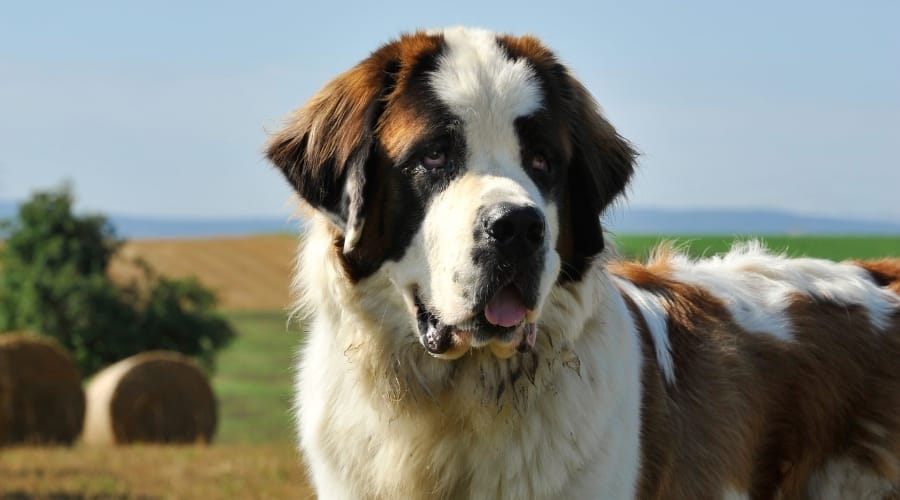
2. Buckhound
The royal deer-chaser who lost their job to stag-hunting fashion trends.
Back in the day, hunting was like medieval DoorDash. You needed the right dog for the right order. Staghounds chased stags. Harriers chased hares. And Buckhounds? They specialized in smaller deer like bucks and fallow deer.
By the 14th century, buck hunting got fancy enough for the British royal family to launch their own pack of Buckhounds (yes, they had a deer-chasing department).
But stag hunting stole the spotlight over time, and by the 20th century, the royal family disbanded the Buckhounds. With no job and no fan club, the Buckhound quietly faded into history.
3. Cordoba Fighting Dog
Too tough to flirt, too intense to last – this dog was all fight and no chill.
This dog was all muscle, no chill. Bred in Cordoba, Argentina, the Cordoba Fighting Dog was the canine equivalent of a bar bouncer with unresolved issues, known for its extreme aggression and near-zero tolerance for other dogs.
In the 1920s, breeders decided to redirect that intensity into something more useful: hunting. They crossed the Cordoba with breeds like the Bulldog, Bull Terrier, Boxer, Great Dane, and Pointer to create the Dogo Argentino, a powerful, trainable hunter with fewer rage issues. As the Dogo rose in popularity, the original Cordoba quietly tapped out of the gene pool.

4. Cumberland Sheepdog
The Border Collie’s gritty, scruffy grandparent with a strong herding game.
Think of the Cumberland Sheepdog as the prequel to the Border Collie. The same intense stare, the same workaholic vibes, just a bit stockier. They stood about 20 inches tall, weighed around 40–50 pounds, and were known for their sharp herding instincts and “I’ve got this” energy.
By the early 20th century, people started calling some of them Border Collies, and over time, the breeds blurred like a sheepdog chasing a cloud of wool. Some experts even believe the Cumberland helped shape the Australian Shepherd, too. Basically, this dog was out there ghostwriting entire bloodlines.
5. Cur
The no-frills, all-skills cattle dog that worked hard and vanished quietly.
The Cur was the blue-collar backbone of British herding dogs. Tough, leggy, and built for bossing cattle around. Described by illustrator Sydenham Edwards in Cynographia Britannica (basically the 1800s dog encyclopedia), Curs were expert drovers, known for nipping heels and sorting their master’s cattle from the neighbor’s with zero hesitation.
They were especially common in Northern England and looked like Collies with gym memberships – taller, stronger, and often born with naturally stumpy tails (nope, not a bad haircut).
No one’s exactly sure why they vanished in the 19th century, but one thing’s clear: they worked hard, bit heels, and didn’t stick around for the credit.
6. Dalbo Dog
Sweden’s fluffy livestock bouncer with a big coat and an even bigger attitude.
Also known as the Dalsland Mastiff, this Swedish livestock guardian was basically the farm’s personal bodyguard. Big, hairy, and very into protecting cattle from anything with teeth or sticky fingers.
They looked like a cross between a Leonberger, an Estrella Mountain Dog, and a walking shag rug, with a thick coat built for the cold and a fearless streak that made wolves think twice.
These gentle giants were used to guard free-roaming herds across the countryside, but by the late 1800s, they were hit hard by disease, famine, and being just a little too good at their job. As farming methods changed and other breeds took over, the Dalbo quietly disappeared into history.
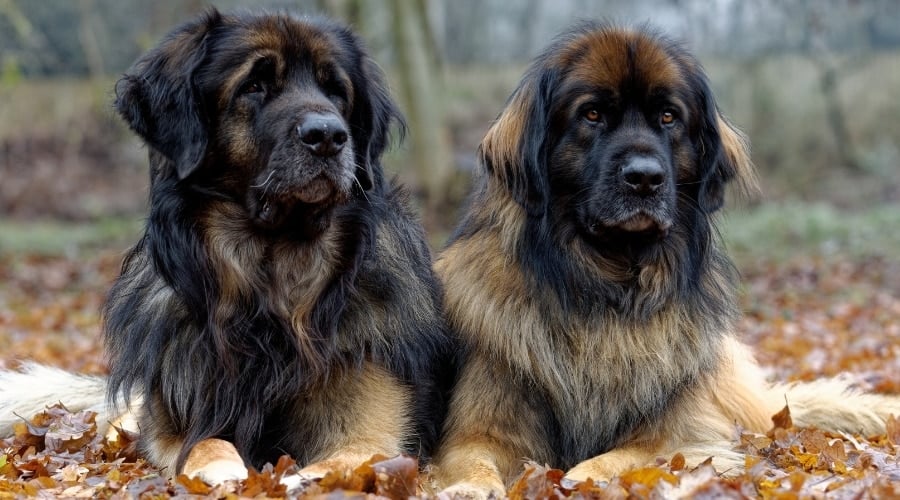
7. Dumfriesshire Black And Tan Foxhound
Scotland’s custom hound blend with a nose for foxes and French flair.
This wasn’t just any foxhound, they were Scotland’s custom blend, brewed near Lockerbie in the southwest. The pack’s owner likely mixed Bloodhounds, English Foxhounds, and the Grand Bleu de Gascogne, creating a black-and-tan beauty with a nose for trouble and a bark that echoed through the hills.
They were bred for fox hunting, plain and simple, but when that pastime was banned, their purpose vanished faster than a fox in the heather. With no more hunts and no Plan B, this uniquely Scottish hound faded out, leaving behind just a name and a legacy of well-sniffed trails.
8. English Water Spaniel
The soggy bird retriever who gave us two modern superstars and then dipped.
This British gundog was the wet dog energy before it was cool, a floppy-eared swimmer that looked like a Spaniel had a love child with a Retriever. Hugely popular with 19th-century bird hunters, the English Water Spaniel was all about diving into lakes and flushing out dinner.
But as breeders started mixing them into newer creations, like the Curly Coated Retriever and Flat Coated Retriever, this original splash specialist lost the spotlight. By the end of the century, the English Water Spaniel had quietly paddled into extinction, outshined by their own descendants.
9. Grand Fauve De Bretagne
A boar-hunter so bold they occasionally took out the family cow.
This French scenthound from Brittany was built to hunt wolves and boars and occasionally made questionable life choices. Known for its incredible nose and fearless nature, the Grand Fauve de Bretagne didn’t always stop at the enemy. They were known to take down their owner’s cattle, too. Oops.
As wolves disappeared from France in the mid-1800s, demand for this French dog breed, a chaotically good boar-hunter, dropped.
Eventually, they were crossed with the Briquet Griffon Vendéen, producing the Griffon Fauve de Bretagne. By the early 20th century, the original Grand Fauve bowed out, likely chasing something on the way.
10. Hare Indian Dog
Part coyote, part companion, all-speed, howled like a wolf and played like a pup.
This slender, fast-footed pup was bred by the Hare Indians of northern Canada for coursing game across frozen terrain. Technically a dog, but with a strong case for “part coyote,” the Hare Indian Dog was built like a sprinting ghost: small head, narrow muzzle, thick coat, and speed to match their wild cousins.
They were playful, loyal, and had a howl that could send a chill down your spine. But as traditional hunting methods faded, so did the need for this unique companion. By the 19th century, crossbreeding, especially with the Canadian Eskimo Dog, blurred the bloodline until they vanished altogether.
11. Old English Bulldog
A compact bruiser with royal ties and a legacy of bulldog brawn.
The Old English Bulldog was short, stocky, and tough as nails, a 15-inch-tall, 45-pound wall of muscle with a stubborn streak. Described in the “Philo-Kuon” breed standard, they looked a lot like today’s Bulldogs but were built more for bull-baiting than snoring on the couch.
They likely descended from Mastiffs or Alaunts, and some of the last known individuals, Wasp, Child, and Billy (owned by the Duke of Hamilton, no less), died out in the 17th century.
As dog fighting gained popularity, breeders started mixing Bulldogs with Terriers to create quicker, more aggressive fighters. That shift left the original Bulldog behind, and they eventually tapped out of the gene pool.
Curious how they compare to today’s Bulldogs? Check out our full breakdown: Old English Bulldog vs. English Bulldog. See how the OG bruiser stacks up against the modern couch potato.
12. Old Welsh Gray Sheepdog
The shaggy herder with the best hair in Wales. Outclassed, but not forgotten.
The Old Welsh Gray was the shaggy underdog of the herding world, literally. Long-haired and scruffy like a Bearded Collie with a weather report to deliver, they were once a common sight on hill farms in Wales.
But the Welsh Gray didn’t stand a chance when the Border Collie showed up with their laser focus and Type A energy. By the 1980s, they were hanging on in a few remote farms, but eventually, they vanished.
That said, they didn’t leave without a legacy, Welsh settlers brought them to Patagonia, where their floofy work ethic lives on in the Patagonian Sheepdog.
13. Turnspit Dog
The kitchen appliance with legs ran the meat wheel, warmed the feet, and got zero thanks.
The Turnspit Dog, also known as the Kitchen Dog, had one job, run in a wheel to rotate meat over a fire. Basically, they were the original rotisserie motor. These poor pups worked in shifts (yes, shifts), taking turns like tiny, tired sous-chefs.
Legend has it they were taken to church on Sundays and used as foot warmers because nothing says “day of rest” like still being a heating device.
They were short, long-bodied, crooked-legged, and usually seen as an ugly dog breed. Because they were seen as “common,” very few records were kept. No one knows their exact breed mix, but they’re considered terrier types.
As kitchens modernized and people no longer wanted a dog that screamed “servant class,” the Turnspit quietly went extinct in the late 19th century.
14. Tweed Water Spaniel
The unsung hero behind the Golden Retriever, with curls and swimming creds to match.
The Tweed Water Spaniel was a curly-coated, water-loving genius of a gundog, known for being both brilliant and soggy. Native to the River Tweed region near the Scottish border, they were loyal retrievers with serious swimming skills.
They were also possibly related to the also-extinct St. John’s Water Dog (yes, another dog that loved to dive for ducks).
Their biggest claim to fame? They helped create the Golden Retriever. So next time your Goldie smiles at you mid-fetch, thank this underrated ancestor.
But as Golden Retrievers and Curly Coated Retrievers took center stage, the humble Tweed Spaniel quietly exited the gene pool sometime in the 19th century. Basically retiring early after giving the world a superstar.
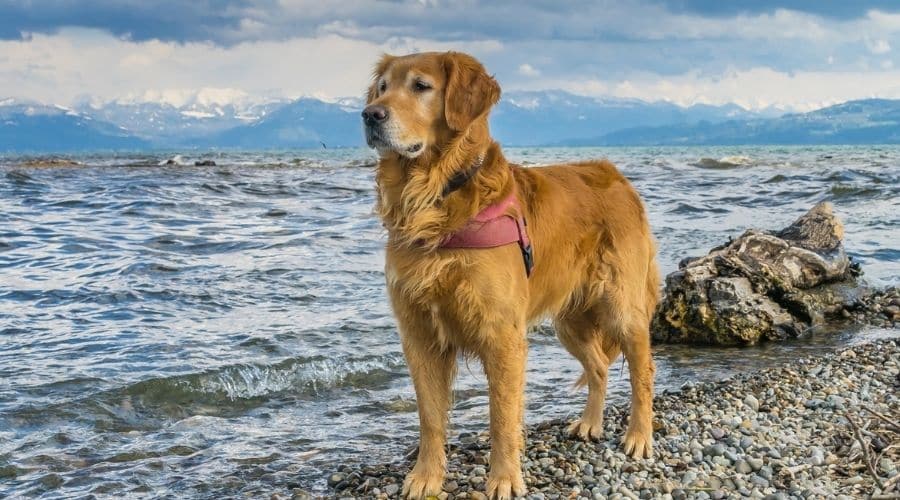
8 Royal Pets & Noble Companions
Some dogs were bred to herd sheep. These? They were bred to sit on silk pillows and get fed better than most peasants.
From ancient empires to European courts, these extinct breeds were the lap warmers of royalty, temple dwellers, and luxury symbols of their time. Some were pampered into oblivion. Others vanished when the empires that loved them crumbled.
1. African Hairless Dog
Semi-wild, sleek, and sun-ready, like a Xolo’s mystery ancestor with desert wanderer vibes.
Also known as the Abyssinian Sand Terrier or African Sand Dog, this breed was basically the bare-skinned mystery dog of the savanna. They were considered “semi-wild,” which is a polite way of saying they did their own thing, often following cattle breeders around like freeloading interns rather than actually living with them.
Small and sleek, they looked a lot like a Xoloitzcuintli minus the branding. Curious what one looked like? You can still see a preserved specimen at the Natural History Museum in Tring, England, just quietly judging you from behind glass.
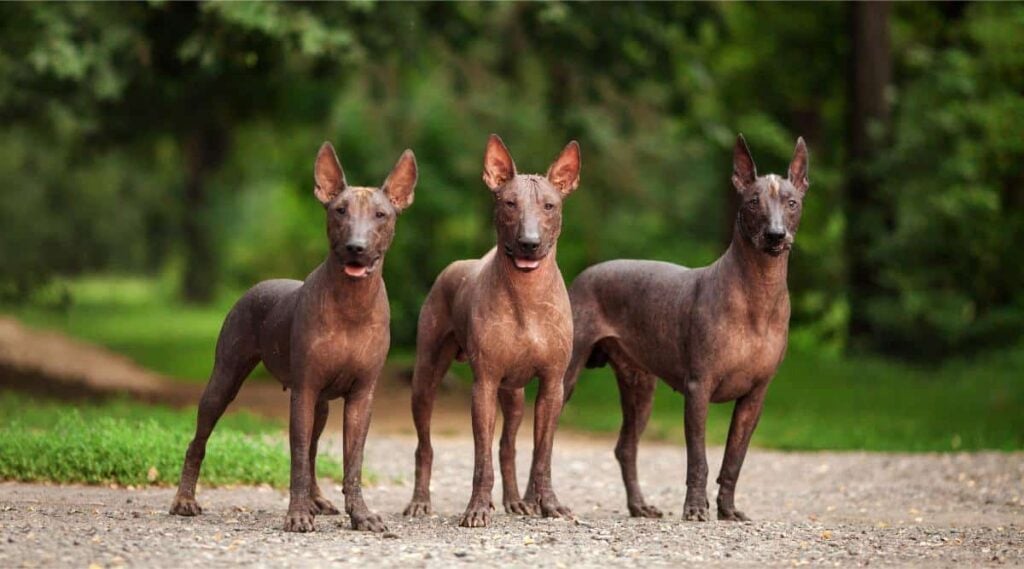
2. Chein-Gris
The medieval French hound that outran kings and themself into extinction.
Also known as the Gray Saint Louis Hound, this medieval French dog came with a royal backstory and some questionable credentials. Legend says Saint Louis brought them back from the Crusades because nothing says “thank you for your holy service” like a pack of oversized, slightly underqualified hunting dogs.
They were preferred over Bloodhounds at the time because they were bigger and looked the part, but let’s just say their tracking skills didn’t exactly win awards.
Their history is fuzzy (much like their coats), but some believe they helped shape the modern Bloodhound. That might explain the badger-gray fur you still see sprinkled into some Bloodhound coats today, like a fuzzy little medieval souvenir.
3. Chiribaya Dog
Golden-hearted llama herders who earned a VIP mummy burial.
This pre-Columbian pup from southwest Peru clearly lived the good life. Archaeologists found over 40 of them mummified, wrapped in blankets, and buried with snacks. If that’s not VIP treatment, I don’t know what is.
Dating from around 900 to 1350 CE, these dogs were companions to the Chiribaya people and were likely treated more like family than pets.
Also known as the Peruvian Shepherd Dog, they had short legs, long snouts, and reportedly looked like a fun-sized Golden Retriever. Forget herding sheep; these pups were out there herding llamas, living in the mountains and getting mummified like royalty. Iconic.
4. Fila Da Terceira
An island guardian with a twisted tail and a short-lived revival attempt.
This mastiff-type guardian hailed exclusively from Terceira Island in the Azores, and they kept it local. Also known as the Roba Torto (“twisted tail”), they were bred to protect homes, families, and probably the occasional garden gnome.
Despite never leaving the island, they made their mark as a foundational breed behind the modern Fila Brasileiro.
Unfortunately, their story ends with a bit of island drama: when numbers dropped dangerously low, the government and breeders tried to revive the breed. But after a major disagreement (classic), the effort flopped. By the 1970s, the Fila da Terceira had twisted their last tail and officially disappeared.
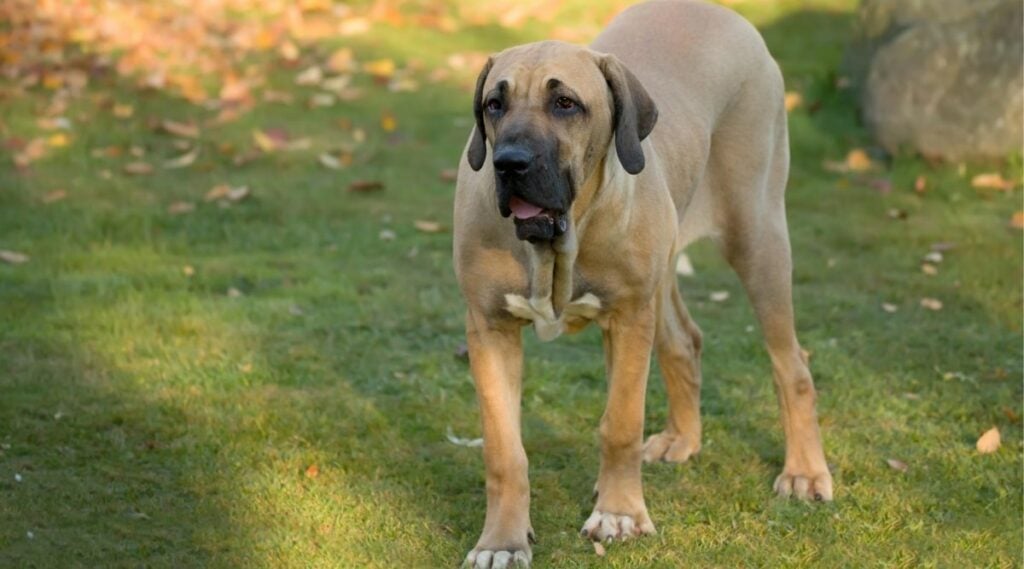
5. King’s White Hound
Too fast for royalty, too royal for survival, extinct by decree and horseback envy.
Also known as the Chien Blanc du Roi, this royal scenthound had serious palace pedigree. Gifted to the French crown in the 15th century, likely a pure white St. Hubert Hound, they were bred into an all-white pack.
They hunted for the kings of France until King Louis XV shut the whole thing down in 1725 (turns out royal dog packs were expensive). Despite their name, they weren’t always pure white as Italian Pointers and Grand Fauve de Bretagne added a bit of variety to the mix.
Eventually, they became too good at their job, so fast and relentless that the king couldn’t keep up on horseback. The solution? Crossbreeding them with slower dogs. The result? Their extinction. Long live the white hounds… just not too fast, apparently.
6. Marquesan Dog
Known only through bones and stone carvings, like a canine urban legend in the Pacific.
The Marquesan Dog is one of the great ghost stories of the canine world. Native to the Marquesas Islands, they left behind no paintings, portraits, or paw prints. Just bones, petroglyphs, and ancient carvings.
Unlike other Polynesian dogs, they likely went extinct before Europeans even showed up, which means we know almost nothing about them, except that they were important enough to be etched in stone.
Basically, they were the canine equivalent of a cameo in a Marvel post-credit scene. Short, cryptic, and full of unanswered questions.
7. Toy Bulldog
Mini bulldog with French flair lost to time but not to Parisian hearts.
Think of the Toy Bulldog as the pocket-sized version of the Old English Bulldog. All the attitude, half the size, and much easier to smuggle into polite society. They were bred down to be companion dogs and show-ring stars, often sporting prick ears and big personalities.
Their exact breed mix is a bit of a mystery, but one thing’s clear: French dog lovers adored them and eventually used them to create the French Bulldog we know today.
Unfortunately, the popularity of newer breeds and heavy exports to France led to their decline, and by the early 20th century, the Toy Bulldog had vanished. These days, you might see Bulldog–Pug mixes sold under the name, but they are not the same.
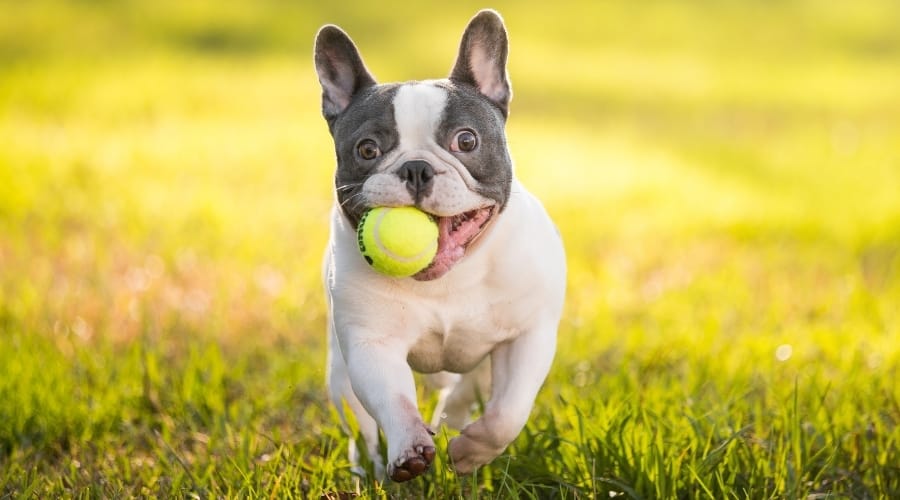
8. Toy Trawler Spaniel
Curly-coated companion with show dog sass, now preserved in a museum, not a kennel.
The Toy Trawler Spaniel was a curly-coated, 15-pound mix of sweetness and sass, believed to descend from the Cavalier King Charles Spaniel and Sussex Spaniel.
They were bred to be companion dogs with a little show-dog flair, equal parts lap warmer and attitude machine. With their tightly curled coats and compact frames, they quickly became a favorite in Victorian parlors and dog shows.
But like many posh trends, they eventually fell out of favor. By the early 20th century, the breed disappeared from breeding circles. One fancy little example still lives on (in a very quiet way) at the Natural History Museum in Tring, where they’re displayed next to the equally extinct African Hairless Dog.
13 War Dogs, Hunters & Fighters
These dogs weren’t bred to cuddle. They were built for battle, blood trails, and serious business. From ancient war zones to royal hunting grounds, these now-extinct breeds served as fearless fighters, tireless trackers, and muscle on four legs.
Some vanished as warfare changed. Others were simply too much dog for the modern world to handle. Let’s take a look.
1. Alaunt
The medieval muscle dog built for war, hunting, and looking terrifying while doing it.
The Alaunt was the Swiss Army knife of ancient dogs, big, muscular, and apparently available in multiple models. Bred by the nomadic Alani tribe from the Iranian steppes, they came in various “strains” depending on the job: slim and speedy for hunting or beefed-up and broad for fighting and bullbaiting.
They were short-haired, serious-looking, and not the kind of dog you’d dress in a sweater. Whether tracking game or throwing down in the arena, the Alaunt was a canine multitool with muscle and purpose, with no fetch required.
2. Belgian Mastiff
Like a furry freight truck, strong, stubborn, and not much for small talk.
The Belgian Mastiff was basically the early Amazon Prime of Flanders, a 100-pound draft dog bred to haul carts full of goods across the Low Countries. Their muscular build, docked tails, and smooth coats made them look like freight trains with fur.
But by the 20th century, carts gave way to cars, and these big, grumpy haulers found themselves out of work. They weren’t exactly cuddly companions, and feeding one wasn’t cheap. So when their job disappeared, so did they. The Belgian Mastiff quietly rolled into extinction sometime in the late 1900s.
3. Bullenbeisser
This German bruiser took on boars and bears, before retiring into a modern Boxer.
The Bullenbeisser was Germany’s answer to “What if a dog could wrestle a bear and still look cool doing it?” Big, dark-coated, and fearless, they were used to hunt boar, stags, and occasionally something with claws and a grudge.
Also known as the German Bulldog, they were a direct ancestor of the modern Boxer. Just imagine your Boxer, but on steroids and with zero interest in cuddling.
Over time, breeders downsized the Bullenbeisser into a more compact, family-friendly version, and after enough crossbreeding, the original vanished. Tough on the outside, extinct on the pedigree.

4. Celtic Hound
Part warrior, part myth, just ask Cúchulainn’s resume.
If you’ve got Irish roots or just an uncle who swears he’s descended from a king, you may have heard of the Celtic Hound, also called the Vertragus. These dogs weren’t just pets; they were battle buddies and big-game hunters known for their size, strength, and absolute lack of chill.
Irish legend tells of the hero Sétanta, who famously killed one and took its name, becoming Cúchulainn, or “Hound of Culann.” So yeah, this breed had mythological PR.
You’ll spot them in 17th-century art, often mid-hunt or mid-glory, and historians believe they paved the way for the Irish Wolfhound and Scottish Deerhound. Big dogs. Bigger stories.
5. Dogo Cubano
Feared, powerful, and tied to a dark history that hastened their fall.
Also known as the Cuban Bloodhound, the Dogo Cubano was a mastiff-type dog with a dark past. They were used for brutal purposes: dog fighting, bull baiting, and, most notoriously, recapturing enslaved people.
These dogs were so effective in that role that European nobility reportedly traveled to Cuba just to buy them. A grim legacy for an otherwise powerful working breed.
While it’s unclear exactly when they became extinct, the abolition of slavery hastened their decline, and they eventually disappeared from the breeding pool. Some believe they contributed to the lineage of the Rhodesian Ridgeback.
6. English White Terrier
Too fragile, too fashionable, and gone before anyone could agree it was real.
The English White Terrier might just be the OG dog breed scam. In the late 1800s, during a full-blown “make-your-own-breed” craze, some breeders insisted this white, prick-eared pup was a legit new breed.
In reality? According to noted dog historian Rawdon Briggs Lee, they were likely the result of inbred working terriers crossed with white Italian Greyhounds, aka fast, nervous, and not exactly emotionally stable.
They were used to help create both the Bull Terrier and Fox Terrier, but on their own, they struggled. Many were partially or fully deaf, had health issues, and were poorly suited to terrier work. They fizzled out after about a century, leaving behind a legacy of confusion and “maybe don’t DIY a dog breed.”
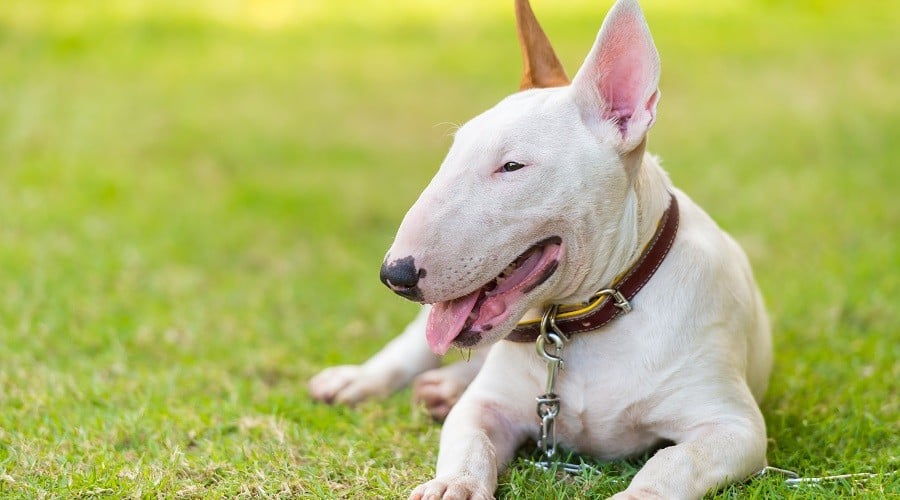
7. Lapponian Shepherd
Disappeared not from nature but thanks to a clerical oops.
The Lapponian Shepherd, also known as Cockhill’s Finnish Lapphound, was a Finnish herder with a confusing name and an even more confusing fate. While the name points to Lapland, it’s really their ancestors who hailed from the Arctic north.
By the 1940s, they were lumped together with two other native breeds, the Finnish Lapphund and Lapponian Herder, under one catch-all label: Lapponian Shepherd.
That mix-and-match strategy worked until the 1960s when the Finnish Kennel Club stepped in to clean things up and accidentally left the actual Lapponian Shepherd off the list. As the other two breeds got proper paperwork, this one quietly vanished into the administrative void.
8. Molossus
The original mastiff is legendary, oversized, and possibly exaggerated by Aristotle.
The Molossus is the big myth and the biggest dog of the ancient world, often credited as the ancestor of all mastiff-type breeds. Even Aristotle gave them a shoutout, which is basically the classical version of making it to a top 10 list.
Kept by the ancient Greeks in the kingdom of Molossis (now between Greece and Albania), they were known for their massive size, intimidating presence, and the kind of bark that probably echoed through marble columns.
Modern breeders have claimed to “recreate” the Molossus, but let’s be honest, it’s mostly artistic license and wishful thinking. The real thing is long gone, and whatever it looked like, you wouldn’t want to be on the wrong end of their leash.
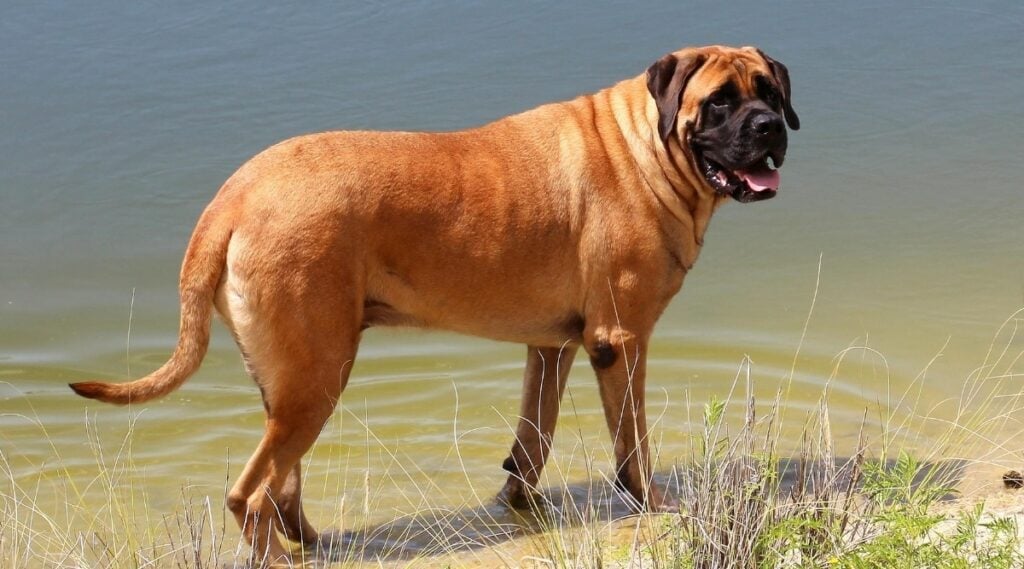
9. Norman Hound
Had the nose of a champ, just not the speed to stay invited to the hunt.
The Norman Hound was a big French scenthound from Normandy with a noble look, a great nose, and… a bit of a speed problem. Despite their impressive scent-tracking abilities, they just couldn’t keep up with faster packmates, which is kind of a dealbreaker in the whole “hunt things down” profession.
As hunting preferences shifted toward quicker, more agile hounds, the Norman Hound fell out of favor and was declared extinct in the late 1800s.
That said, they didn’t vanish without leaving a legacy. They’re believed to have helped shape the modern Bloodhound, the ultimate sniff machine with zero punctuality issues.
10. Rastreador Brasileiro
Revived in name only. The reboot’s not quite the OG.
The Rastreador Brasileiro is a breed with an identity crisis. Initially recognized by the Fédération Cynologique Internationale (FCI) in 1967, this Brazilian scenthound faced disaster when disease wiped out their entire breeding population. By 1973, it was officially declared extinct, which should’ve been the end of the story.
But in true comeback fashion, efforts were made to revive the breed. The FCI re-recognized it, and a shiny new breed standard was released, last updated in 2020. The problem? It’s not the same dog.
There’s little info on how the breed was re-created, and today’s version differs from the original in appearance and genetics. So, while the name survived, most experts agree: the OG Rastreador Brasileiro is gone. The reboot? A respectful cover version.
11. Southern Hound
The unsung hero of scent work and silent parent to modern hound royalty.
The Southern Hound was England’s slightly more competent hunting dog, especially when compared to its northern cousin. Common in southern England, they had a decent nose and a bit more staying power in the field, which earned them a longer run before fading out sometime in the 19th century.
Their downfall? Too much success at the gene pool party. Breeders crossed them with other scenthounds to improve newer hunting breeds, and eventually, the pure Southern Hound just disappeared into the mix.
Still, they left a serious legacy – helping shape Beagles, Bloodhounds, Coonhounds, Foxhounds, and Harriers. Not bad for the underdog of the South.
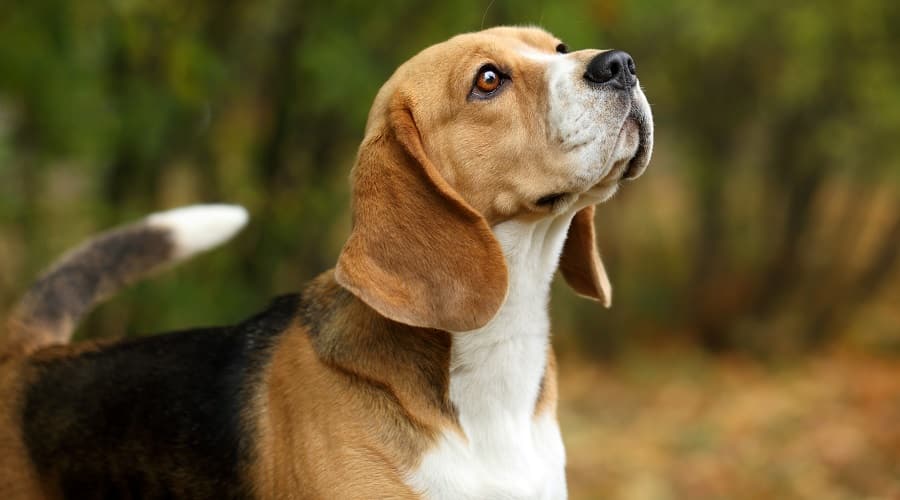
12. Staghound
Ran with nobility until a rabies outbreak took them out of the game.
The Staghound (or English Staghound, if you’re feeling fancy) was a medieval scenthound built for the big leagues. They hunted stags in coordinated packs, combining size, strength, and stamina that made them the apex athlete of the noble hunt.
Males and females were so different in size that they looked like separate breeds. Just check out the portrait of “Governor and Famous,” two legendary North Devon Staghounds.
The North Devon Hunt was the last known pack, passed around like an heirloom until it was finally sold to a German buyer. Sadly, the dogs were exported, then reportedly wiped out during a rabies outbreak, ending the breed by the late 19th century. A rough exit for a dog bred to bring down kings of the forest.
13. Tahltan Bear Dog
Small enough to share your tent and tough enough to chase off a bear.
The Tahltan Bear Dog was small, loyal, and brave enough to hunt animals way out of its weight class, including bears. Brought to Canada during early migrations, they were prized by Indigenous communities not just as hunters but as companions, too.
They often shared tents and beds with their humans, pulling double duty as both protectors and warm, snuggly foot heaters.
Despite their courage and connection to their people, the breed declined after European explorers arrived. As trade networks expanded, Tahltans were exchanged for goods, and their numbers dwindled. Eventually, they disappeared altogether, a little dog with a big job and an even bigger heart.
10. More Proto-Pups: Extinct Dogs That Engineered Today’s Favorites
Before the Golden Retriever, the Aussie Cattle Dog, or the Labrador ever wagged a tail, these lesser-known breeds were laying the groundwork.
They may not get name recognition today, but their traits, talents, and DNA live on in some of the most beloved dogs around. These proto-pups were the beta versions of breeds we now know and love.
1. Black And Tan Terrier
The original tunnel-chasing, fox-hassling terrier passed its chaos gene to the rest of the clan.
Before terriers became polished little showdogs, the Black and Tan Terrier was the scrappy MVP of 19th-century England. Think of them as the underground version of today’s Manchester Terrier, literally.
With their long legs and narrow chests, they were basically designed to sprint face-first into foxholes. Born in northern England and classed as Fell Terriers, these wiry little hunters had one mission: find the fox, ruin its day, repeat. They may be gone, but their attitude lives on in every yappy, fearless terrier today.
2. Braque Dupuy
France’s rare speedster pointer. Half hunter, half sports car, now fully extinct.
The Braque Dupuy was a sleek, stylish pointer from the Poitou region of France, though it probably flirted with some English Pointer genes on the side. Weighing in at 50–60 pounds, it had the body of a sprinter and the attitude of a gourmet hunter.
With hints of Greyhound and Sloughi in their lineage, this dog wasn’t just pointing at birds. It was zooming toward them. Despite their talents, they never really caught on in France. The breed fizzled out quietly, though a few hopeful romantics still claim they’re hiding somewhere. (Spoiler: probably not.)
3. Halls Heeler
The Aussie legend behind heel-nipping cattle dogs, with more mystery than a campfire ghost story.
Before the Australian Cattle Dog was chasing cows and stealing hearts, there was the Halls Heeler. A working dog so surrounded by myth, historians still squint at the details.
Bred by the Hall family in 19th-century Australia, these dogs were tough, tireless, and had a habit of biting livestock right on the business end. Robert Kaleski later refined them into the modern standard by mixing in Dalmatians, Kelpies, and more.
Sadly, the pure Hall’s Heeler disappeared into the gene pool, but their heel-nipping legacy lives on in every Aussie Cattle Dog that’s ever herded a fence post.
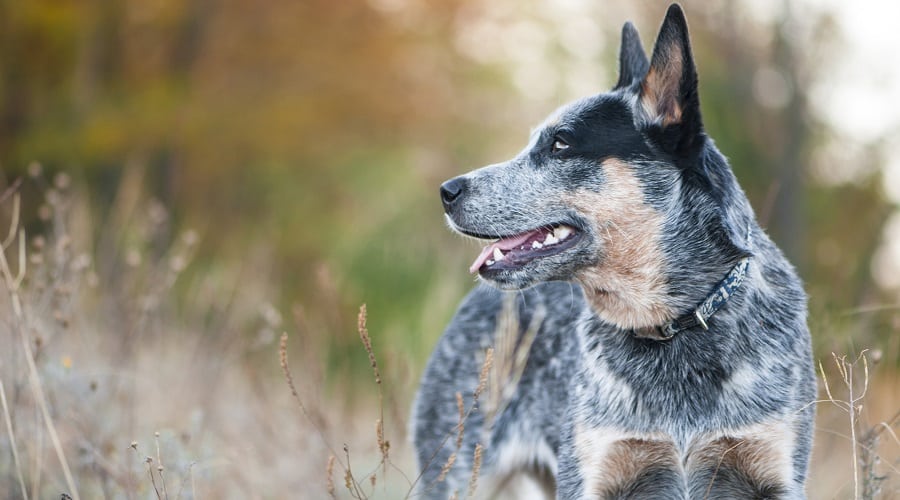
4. Moscow Water Dog
When your rescue dog is better at biting and dragging people under, so you pivot and create a new breed.
Created in the Red Star Kennels of the Soviet Union, the Moscow Water Dog was meant to be a heroic swimmer hauling humans out of freezing waters. Instead? They got 100 pounds of nope.
These dogs, likely a mix of Newfoundlands, Caucasian Shepherds, and other giants, looked the part but, uh… tended to bite and drown the people they were supposed to save. Oops.
The project was shelved by the 1980s, but not all was lost. Their DNA lived on in the Russian Black Terrier, proving that even failed lifeguards can leave a legacy.
5. Norfolk Spaniel
The Spaniel with an identity crisis absorbed into the Springer club and never seen again.
The Norfolk Spaniel was less of a formal breed and more of a catch-all term for any big, bouncy spaniel that wasn’t a Clumber or Sussex. Known for their strong bond with humans (read: clingy Velcro energy), these dogs were common but poorly defined.
When the UK Kennel Club tidied up their breed list in 1902, they simply rolled all Norfolk Spaniels into the shiny new English Springer Spaniel designation. And poof, just like that, they were extinct by paperwork. But hey, they didn’t vanish, they just got rebranded.
6. Old Croatian Sighthound
A medieval speedster banned into extinction because, apparently, running really fast was too edgy.
The Old Croatian Sighthound, also known as the Old Bosnian Sighthound, was built for the chase – big, fast, and ready to course anything that moved.
For centuries, they roamed the Balkans doing what sighthounds do best: blitzing prey with zero chill. But by the 20th century, government bans on coursing made owning one nearly impossible.
A last-ditch rescue effort in the 1980s tried to revive them, but like a slow hound in a sprint, the project never caught up. By 1995, this turbo-charged hunter was officially declared extinct.
7. Old Spanish Pointer
The OG pointer that aimed so well, every other breed stole their moves and their spotlight.
The Old Spanish Pointer, or Perro de Punta Español, was the blueprint for modern pointing dogs, and probably never got a thank-you card.
Slow but steady, this Spanish-born bird dog helped shape legends like the German Shorthaired Pointer and English Pointer, both of which ended up sleeker, faster, and more marketable.
By the 19th century, breeders wanted more zoom and less heritage, so they bred out the Old Spanish Pointer entirely. Today, it lives on mostly in DNA.
8. Paisley Terrier
Too pretty for the farm, too fancy for the fanciers – hello, Yorkie ancestor.
The Paisley Terrier was like the glam little cousin of the Skye Terrier, bred in Scotland’s Paisley and Clydesdale regions to be a smaller, silkier, show-ready version of its scruffy working-class relatives.
But Skye Terrier purists weren’t fans and cried “mutt!” from the start. Despite the drama, the Paisley Terrier quietly strutted their way into history by helping to create two beloved breeds: the Yorkshire Terrier and the Silky Terrier.
Eventually, this dainty diva faded from show rings, but their legacy is still snapping in tiny bows and designer handbags everywhere.
9. St John’s Water Dog
The tuxedo-clad fisherman’s helper who fathered half the Retriever family tree and bowed out like a gentleman.
Before there were Goldens and Labs fetching tennis balls in suburban backyards, there was the St. John’s Water Dog. A hardworking, water-loving dog from Newfoundland that helped fishermen haul in nets and survive the cold.
With their classic black coats and snazzy white tuxedo markings, they were basically the James Bond of early retrievers. This dog passed down their DNA to Labrador Retrievers, Golden Retrievers, Chessies, and even the Newfoundland.
The last few purebreds were spotted (and photographed!) in the 1980s. But sadly, they were all older gents, and when they passed, so did the breed.
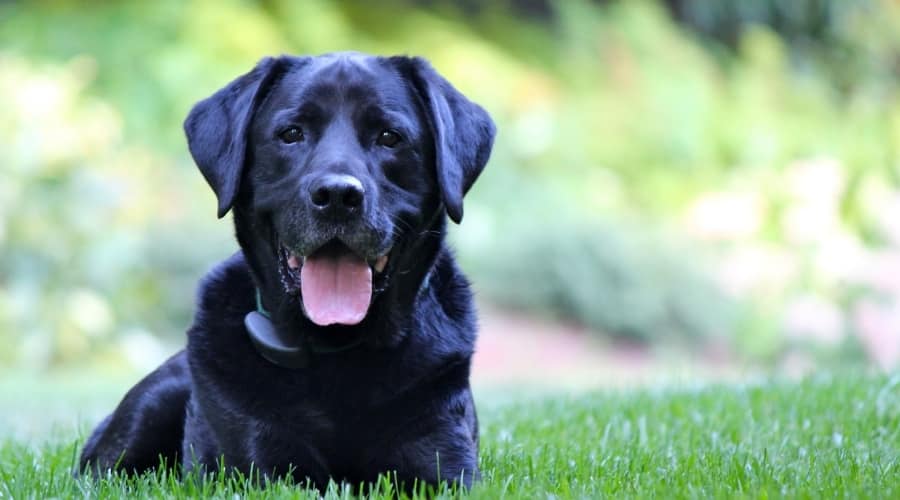
10. Welsh Hillman
Wales’ original herding machine outpaced by Border Collie brilliance.
The Welsh Hillman was once the go-to hilltop herder in Wales, keeping sheep in check with ease and style. Resembling a smaller German Shepherd, they were athletic, loyal, and possibly the oldest Welsh sheepdog breed on record.
Unfortunately, even legends get lapped. As Border Collies and other modern herders took over, the Hillman’s numbers quietly dwindled.
The last known member of the breed passed away around 1990, taking the whole line with them. A working dog to the end and now a ghost in the pedigree of today’s herders.
9 Dogs Lost To Time: Banished, Sacred, Or Nearly Imaginary
Some dogs were worshipped. Some were eaten. And some only exist in legends, cave drawings, or one weird museum sketch. These breeds didn’t just disappear. They dissolved into mystery.
Ancient, indigenous, or poorly recorded, they leave us with more questions than answers (and definitely no dog DNA tests).
1. Argentine Polar Dog
Built for snow, banned by a treaty, frozen out of history by paperwork.
The Argentine Polar Dog was an Arctic-ready power pup created by the Argentine Army using a frosty cocktail of Alaskan Malamute, Greenland Dog, Manchurian Spitz, and Siberian Husky. These dogs were sled-hauling machines, perfectly adapted to Antarctic conditions.
But their biggest enemy wasn’t the cold; it was bureaucracy. Under the 1959 Antarctic Treaty, all non-native species were banned from the continent to protect local wildlife. No exception for good boys.
The order came down, and with no breeding plan in place, the breed quietly vanished. A working dog bred for greatness, retired by geopolitics.
We have a list of other cold-weather dog breeds to explore.
2. Hawaiian Poi Dog
Half spiritual totem, half dinner, and entirely extinct.
The Hawaiian Poi Dog was a stubby, pot-bellied pup with a flat head, white coat, and a diet as questionable as its job description. Named after poi, the mushy staple food of Hawaii, this dog was raised on the stuff, which led to serious malnutrition and a body built less for agility, more for… slow-roasting.
These dogs roamed the islands freely, doubling as good luck charms and livestock. After Western contact, they were crossbred with foreign breeds until the original Poi Dog identity faded into the cultural stew.
Today, “Poi Dog” is Hawaiian slang for any mixed-breed mutt, because even extinct dogs deserve a legacy.
3. Kuri
Part demigod, part dinner, and 100% woven into Māori legend.
The Kuri was New Zealand’s OG dog, brought over by Polynesian settlers in the 13th century. Immortalized in Māori mythology, where the demigod Māui turned his annoying brother-in-law into the first Kuri. (Sibling drama, but make it divine.)
These short-legged, bushy-tailed pups pulled triple duty: hunting companions, cloak material, and… dinner. By the 18th century, they were everywhere. But once European dogs showed up, the Kuri gene pool was washed out fast.
The last known Kuri is now stuffed and staring into eternity at the Museum of New Zealand Te Papa Tongarewa, probably wondering what happened.
4. North Country Beagle
Too slow for the fox, too fuzzy for the records – this hound quietly bowed out.
The North Country Beagle, also called the Northern Hound, was once a familiar sight in northern England’s hunting packs. Unfortunately, they weren’t particularly great at the whole “hunting” part—slow on the trail and slow to gain fans.
Believed to descend from the extinct Talbot Hound (coming up soon), they helped shape future breeds like the English Foxhound, even as they shuffled off quietly sometime in the 18th century.
Little was written, and no grand farewell was given. Just one more loyal pooch lost to time and the evolution of better sniffer tech.
5. Salish Wool Dog
The only dog in history bred to be a cozy blanket and pulled it off in style.
The Salish Wool Dog, also known as the Comox Dog, lived among the Salish peoples in what’s now Washington and British Columbia. And let’s just say they took the term “fluffy” to legendary levels.
These Spitz-type pups were bred not for herding, guarding, or fetching… but for their ultra-soft, wool-like fur, which was spun into thick, beautiful blankets. Creating a single blanket could take years, which meant these dogs were basically living textile factories.
Sadly, with the invention of machine-spun yarn, their job (and breed) was phased out. One preserved pup and one prized blanket now live at the Smithsonian Museum in Washington D.C., quietly flexing their cultural clout.
6. Tahitian Dog
Feast dish, fashion accessory, and friendly island mutt, this pup did it all (unfortunately).
The Tahitian Dog, whose name literally means “native dog” in the Tahitian language, was a three-in-one survival package: food source, fashion supplier, and tool kit.
These Polynesian pups were so popular at island feasts that explorer James Cook compared the taste to lamb in his journals, so… there’s that. Their bones and fur were also repurposed for ornaments and tools, giving “every part of the buffalo” energy.
As foreign dogs flooded the islands in the 18th century, the Tahitian Dog was absorbed into the gene pool and quietly vanished as a standalone breed.
7. Talbot Hound
An adorable hunting mystery wrapped in white fur and royal gossip.
The Talbot Hound was basically the medieval meme dog – white, floppy-eared, and featured in more 17th-century paintings than actual hunt records.
Some say they were brought to England by William the Conqueror, and others say they just looked French. We don’t even know if they hunted by scent or sight or what they were chasing. Rabbits? Royal clout? Who knows…
Either way, they were cute and allegedly the Beagle’s great-great-grandparent. Eventually, they were bred out in the 18th and 19th centuries and replaced by leaner, meaner hunting machines. But hey, for a dog we barely understand, the Talbot still left a royal paw print on history.
8. Techichi
The mystical meatball that evolved into the modern Chihuahua, with a side of spiritual significance.
Long before your purse-sized Chihuahua was strutting through TikTok, the Techichi roamed ancient Mexico, larger, fluffier, and allegedly magical.
Bred by the Toltecs and then downsized by the Aztecs, these pups were believed to guide souls to the afterlife, ward off evil, and… served with dinner. European explorers first documented them in the 1500s, and while the spiritual reputation stuck, so did their role as a protein source.
By the 19th century, enough interbreeding, and, let’s be honest, eating, led to their extinction. Their legacy lives on in the Chihuahua, who kept the sass and lost the size.

9. Tesem
Ancient Egypt’s OG sighthound – lean, loyal, and probably judging you from a tomb wall.
The Tesem was Egypt’s elegant hunting companion over 3,000 years ago, often seen carved into tombs, running across cave walls, or mummified next to royalty like a loyal coworker who never left the office.
With a lean frame, curly tail, and tall prick ears, they looked like a desert-ready Greyhound, but surprise! They were actually terrier-sized, according to skeletal remains.
Canine historians believe they were early sighthounds and ancestral to breeds like the Sloughi, Basenji, and African Pariah dogs. Regal and mysterious, the Tesem was basically the pharaoh’s four-legged status symbol.
The 54 Lost Dog Breeds That Helped Shape The Dogs We Love Today
These dogs from royal palaces, battlefields, kitchens, and frozen tundras are all gone but not forgotten.
Save or share this list to honor the weird, wild, and woolly ancestors hiding in your modern mutt’s genes.

Frequently Asked Questions About Extinct Dog Breeds
Do you have questions about these dog ghosts? You’re not alone, I’ve dug up the weirdest ones we get asked all the time. Still wondering something about your pup’s extinct ancestors I’ve missed? Drop your question in the comments, and we’ll get back to you with an answer.
Why Do Dog Breeds Become Extinct?
There are many reasons why dog breeds become extinct. Their purpose might not have been needed anymore, like the Turnspit Dog. Other dog breeds might have been favored over them, like the St John’s Water Dog, which the more popular Labrador Retriever replaced. Some dog breeds ceased to exist through extensive breeding.
Are There Any Dog Breeds Near To Extinction?
According to the Kennel Club and other sources, a few dog breeds are vulnerable. These include the Otterhound, the Dandie Dinmont Terrier, the English Toy Terrier, the Harrier, the Chinook, the Skye Terrier, and the Sussex Spaniel, to name just a few breeds. It has been stated that there are more Giant Pandas in the world than Skye Terriers.
Can Extinct Dog Breeds Be Brought Back?
Although some breeders claim to have brought back extinct dog breeds by mixing similar breeds, it’s impossible to bring an extinct animal back that way. All they have done is create a mixed breed that looks similar.
However, recent DNA-editing technology has brought scientists close to being able to bring back extinct animals from the dead. They are currently working on bringing back the dog-like marsupial, the Tasmanian Tiger, back to life.
But when it comes to dog breeders’ claims that they have brought an extinct dog breed back, don’t listen to them. For example, a handful of breeders claim to have resurrected the ancient Greek Molossus dog, now calling them the American Molossus.
Not only is this impossible but it is also based on guesswork founded on incomplete historical records. Learn more about how to find a responsible dog breeder and spot puppy scams and puppy mills.
Can I Find Out If My Dog Is Related To One Of These Extinct Dog Breeds?
Sort of! While DNA tests can’t pinpoint extinct breeds directly, they can reveal the modern breeds your dog descends from, many of which were shaped by these lost dogs. So yes, your mutt might be carrying the spirit of a Turnspit or a Talbot. We have reviewed the best dog DNA tests available.
Weird Dog Habits Your Pup Inherited From The Ghosts Of Good Boys Past
Some of your dog’s strangest behaviors? Yeah, they might be ancient holdovers from their extinct ancestors. That intense stare while pooping? It’s a leftover survival instinct when your pup wants backup while they’re vulnerable.
Sniffing your crotch like it’s a handshake? Blame thousands of years of scent-based socializing. Eating poop? Not ideal, but not new, early working dogs probably weren’t picky when food was scarce. Lastly, the zoomies? Classic throwback to high-energy hunters blowing off steam.
We need to know which extinct dog you think lives on in your pup’s weird habits. Share your theories, ancestral guesses, or just confess that your dog sniffs butts like a 14th-century scent hound in the comments. We read every comment and judge none.
